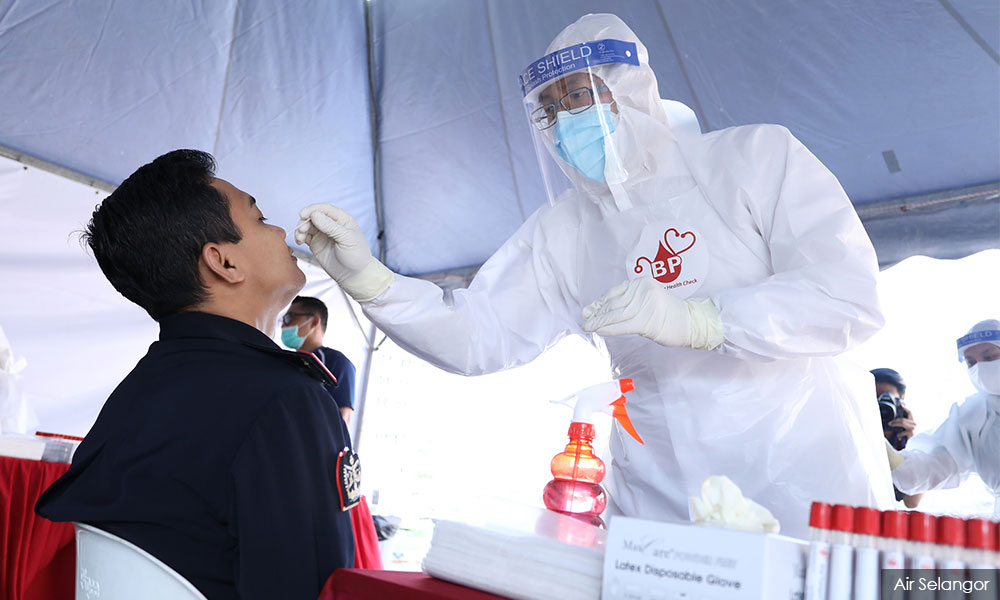LETTER | The next frontier in diabetes self-monitoring
LETTER | After grappling with the pandemic for more than a year, Malaysia is still waging a fierce battle against the fourth wave of Covid-19 infections and the resultant health crisis.
Given the continuously escalating number of cases in Malaysia, it is evident that our healthcare system is struggling to tackle both Covid-19 and provide Malaysians with vital care.
One of the fastest-growing health crises facing our nation is the widely discussed chronic non-communicable disease (NCD) known as diabetes. According to the World Health Organisation (WHO), individuals living with diabetes are more likely to have serious complications from Covid-19.
In Malaysia, the Ministry of Health noted that Covid-19 patients with NCD fared worse than others, with more than 85 percent of fatalities stemming from patients with pre-existing conditions like diabetes, high blood pressure, heart disease, and chronic kidney disease.
This is alarming as the National Health and Morbidity Survey 2019 3 revealed that an estimated 3.9 million adults aged 18 and above have diabetes and the prevalence rate had also increased to 18.3 percent in 2019 as compared with 13.4 percent in 2015.
This is something that we should not take lightly. When an individual living with diabetes contracts an infection such as Covid-19, management of glucose is made more difficult due to the stress of the infection, causing fluctuations in their blood glucose levels.
Furthermore, when other comorbidities (for example, hypertension or obesity) or complications (for example, diabetic kidney disease, cardiovascular disease) are present, the risk of developing a more severe infection is even higher.
That said, the advancement of medical innovations has brought about a massive change to the healthcare industry including diabetes management. It has made significant advances from identifying hyperglycaemia through the taste of urine to bringing holistic diabetes management to a new level by introducing self-monitoring and self-management devices such as continuous glucose monitoring, insulin pumps and more.

In the last 18 months of the Covid-19 pandemic, individuals living with diabetes have faced challenges getting their routine check-ups with their doctors at clinics and hospitals, especially during the extended movement control order or just having a fear of contracting the virus in crowded hospitals.
Though some patients may be able to keep their glucose levels in check with a well-balanced diet, physical activities, or regulated sleeping hours, seeking medical consultations with their doctor or healthcare professional remains crucial as they can be given appropriate advice including adjustments in medication, in a timely manner.
In addition, data obtained when patients self-monitor their blood glucose levels at home and shared during their consultation will come in handy to assist the doctor in deciding how best to maintain good glucose control.
Decades ago, fingerpricks were once a revelation for doctors to assess patients’ ability to manage and control their diabetes.
However, there are limitations: the result obtained from the fingerprick can only provide a snapshot of glucose levels at that moment in time and people with diabetes are advised to perform multiple glucose measurements a day.
Having to face the unforgiving relentlessness of diabetes that impacts patients’ daily routines may eventually lead to "diabetes burnout", causing some patients to grow tired of managing their condition and “give up” and disregard their glucose control.
To help patients better manage their diabetes, technologies have evolved and progressed. For example, there are new wearable innovative devices such as the continuous glucose monitoring (CGM) technology that helps patients to obtain accurate and regular blood glucose readings.
CGM has become significantly more accessible and quicker and in real-time (that is, immediate feedback on their glucose level), eliminating the hassle of doing multiple fingerprick tests.
Combined with the benefits of both the conventional fingerprick method and CGM, technologies like the FreeStyle Libre is a never-like-before approach to diabetes management, allowing patients to measure their glucose levels using a sensor placed just under the skin that uses the interstitial fluid in skin tissues to provide the reading.
Patients can place the sensor on the back of the arms, and discreetly scan it with a reader to receive updates about their glucose levels down-to-the-minute, read the data presented; gain an understanding of how their lifestyle choices like meals and exercise affect their glucose control. They can also share the results with their healthcare professionals on their next medical appointment.
In a nutshell, the flexibility of CGM gives patients living with diabetes an improved quality of life as they are now free to live a more active and informed lifestyle without fingerpricks and the risk of diabetes burnout.
In addition, these advancements in diabetes monitoring technology have indeed given those living with diabetes the motivation to effectively manage their health condition.
CHAN SIEW PHENG is senior consultant endocrinologist and president of Malaysian Endocrine and Metabolic Society (MEMS).
The views expressed here are those of the author/contributor and do not necessarily represent the views of Malaysiakini.
RM12.50 / month
- Unlimited access to award-winning journalism
- Comment and share your opinions on all our articles
- Gift interesting stories to your friends
- Tax deductable
